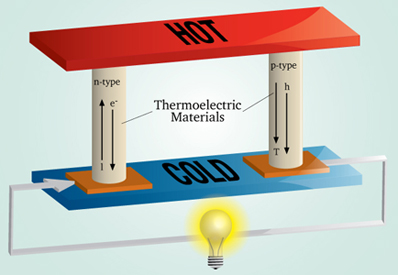Research
Organic Thermoelectric Materials: Molecular and Supramolecular Approaches.
| Principal investigator: | Oliver FENWICK |
| Co-investigator(s): |

Thermoelectric materials generate a voltage when placed in a temperature gradient through the Seebeck effect, and this voltage can be harnessed in thermoelectric generators to generate electrical power from waste heat. These materials therefore have enormous potential for meeting part of our energy needs and in powering wearable and energy-autarkic devices, but improved materials are required before this can be realised.
There have been recent reports of high thermoelectric performance in certain organic materials. Organic thermoelectric materials are in the very early stages of development, but the excitement surrounding them lies not only in their thermoelectric performance, but also in their relatively low cost, solution processability and their mechanical flexibility which is a huge advantage in many wearable electronic applications. Furthermore, their properties are chemically tunable. In short, they could revolutionise the field of thermoelectric power generation.
Organic semiconductors exhibit a rich variety of structures with crystalline, polycrystalline and amorphous morphologies that depend on both molecular structure and processing. The electronic behaviour of organic semiconductors is equally diverse with both hopping and band-like transport observable in different materials or in the same material at different temperatures, and even superconducting phases in a small number of cases. This diversity of morphologies and electronic regimes is one of the strengths of organic semiconductors as it allows many additional degrees of freedom for material optimisation. This proposal will establish understanding of how to control these degrees of freedom to maximise thermoelectric performance.
Objectives:
This project aims to provide physical insight into materials properties that will accelerate the development of organic thermoelectric generators. Specifically:
- To characterise thermoelectric properties of organic semiconductors in regimes of hopping transport, band-like transport and superconductivity and compare with known models.
- To exploit supramolecular assembly to form 1-dimensional chains of molecules and compare their thermoelectric properties with conventional bulk phases.

